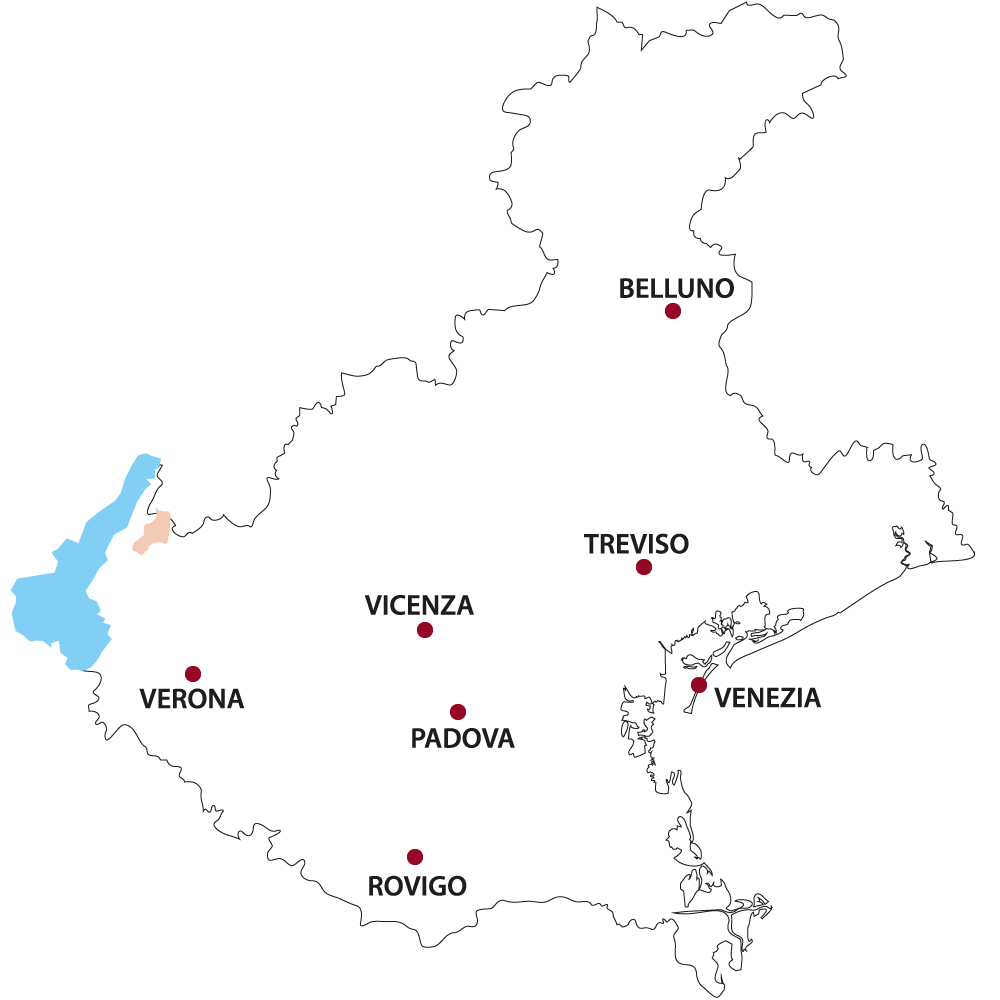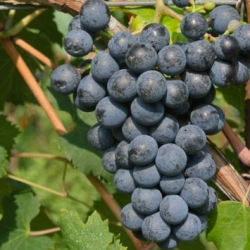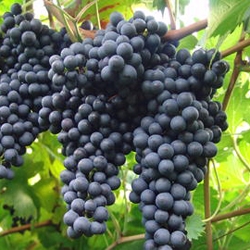

Zona di produzione
Terradeiforti is a small D.O.C. area that lies between the Veneto and Trentino regions, in a valley shaped by glaciers during the quaternary era, crossed by the Adige River. It includes the hilly area of the municipalities of Rivoli Veronese, Brentino Belluno, Dolcè and Avio with over 1,200 hectares of vineyards. This territory, that has been the communication route between the Mediterranean and the Alpine worlds since primordial times, has a long oenological tradition. The Terradeiforti-Valdadige denomination protects and promotes the autochthonous Enantio and Casetta red wines, together with Pinot Grigio and Chardonnay. The origin of the name is linked to this area. Along the lower Adige valley, eight forts impose themselves south of the Chiusa gateway, whilst the medieval castle of Avio closes the territory to the north. The mountain chain of Mount Baldo and Lake Garda lie on either side of the Lessinia plateau. The crown of castles and forts that have escorted the Adige River since the year 1000, is the most obvious imprint left on this land, a fascinating architectural belt, unique in its genre, which extends from the fort of Rivoli to the castle of Avio. The interior is all to be discovered. This valley is extraordinarily rich in nature, history, architecture, tradition and in addition, can also offer the visitor the uniqueness of its wines. There are in fact, about 700 wine producers, a wine cooperative and eleven wineries associated to the Consortium of Protection for Terredeiforti wines
Caratteristiche e tipologie vino
The Terradeiforti has adhered to double wire viticulture since ancient times: in the first century A.D. Pliny the Elder in his “Naturalis Historia”, speaking of wild and cultivated vines to the north of Verona, wrote: “Labrusca: hoc est vite silvestris, quod vocatur oenanthium,... in other words: “a wild wine called Enantio”. Today the same vine is valued by producers of Terradeiforti under the direction of the Consortium for Protection. The autochthonous indented leaf vine, Enantio, now protected by the “Terradeiforti-Adige” D.O.C., yields a red fruit grape cultivated until a few years ago merely to improve daily wines with its fullness of colour and body consistence, that is today offered in purity, its wild nature well expressed by the bottles that have made consumers curious and has started to gain numerous recognitions even by the most expert palates. Many strains of Enantio, some centuries old, have survived even the phylloxera that between the 19th and 20th centuries, eliminated in a few years, almost all the European vineyards. Viticulture recovered by grafting onto American stems (phylloxera only attacks European vines). Enantio, however, that grows in the sandy soils of the valley, was not affected because the sharp flakes of silica component defends it from the parasite. So today you can enjoy a 100% European wine with a taste that has disappeared everywhere else. The autochthonous Terradeiforti variety now D.O.C. is the Casetta. It was recovered under the popular name “Foja tonda” due to the intelligent and loving care of Albino Armani who spared it from being abandoned in favour of more profitable international types. It is a niche production grape that gives a wine of great affinity with the just as rustic and wild territory of origin. Its careful cultivation in the vineyard is followed by refinement in the cellar with appropriate aging in oak barrels to bring out its character before, just like every other “noble” variety, it faces the judgement of the expert.
Grapes
-

CASETTA
-

ENANTIO
White Wines
TERRADEIFORTI-VALDADIGE CHARDONNAY
Colour: straw-like yellow
Bouquet: complesso, fine, elegante, spesso fruttato e floreale ;
Taste: secco, talvolta abboccato;
Alcoholic Strength minimum total volume: 11,5% vol., anche nella pregiata versione “Superiore”;
Accompaniments: aperitivo o fuori pasto, antipasti, verdure e pesce, minestre asciutte, risotti alle erbe.
TERRADEIFORTI-VALDADIGE PINOT GRIGIO
Colour: da giallo paglierino ad ambrato con riflessi ramati;
Bouquet: fruttato da giovane, con sentori di pera e nocciola, che si trasformano nel tempo in un bouquet più complesso, ricorda il fieno secco e le mandorle tostate;
Taste: asciutto, armonico, caratteristico, con eventuale percezione gradevole di legno;
Alcoholic Strength minimum total volume: 11,5% vol., anche nella pregiata versione “Superiore”;
Accompaniments: minestre, piatti a base di uva e di pesce.
TERRADEIFORTI-VALDADIGE PASSITO
Colour: giallo dorato, con eventuali riflessi ambrati;
Bouquet: elegante, fruttato, intenso;
Taste: dolce, vellutato, armonico;
Alcoholic Strength minimum total volume: 14% vol.;
Accompaniments: dolci, biscotti, pasticceria secca e formaggi stagionati;
Note particolari: ottenuto da un minimo di Chardonnay (60 per cento) insieme ad altri vitigni a bacca bianca.
Red Wines
TERRADEIFORTI-VALDADIGE ENANTIO
Colour: rosso rubino intenso, con riflessi granati se invecchiato;
Bouquet: intenso, con note di frutta rossa matura molto penetranti e sensazioni balsamiche;
Taste: caratteristico, di corpo, robusto, gusto di notevole struttura, con sapidità e tannini ben delineati ed equilibrati;
Alcoholic Strength minimum total volume: 12% vol.;
Accompaniments: da abbinare a piatti di arrosti di carne rosse, selvaggina, formaggi di montagna stagionati;
Note particolari: l’Enantio è un vitigno autoctono della Terradeiforti. I forti legami filogenetici con le viti selvatiche che si trovano nei boschi della valle dimostrano la provenienza da questi progenitori. Il nome Enantio si richiama agli scritti di Plinio il Vecchio (I secolo d.c.), che nelle sue Naturalis Historiae citava le uve di questa parte della Retia. Vengono prodotte anche le versioni “Passito” e “Riserva”, quest’ultima sottoposta ad una maturazione di 21 mesi, più un ulteriore invecchiamento di tre mesi in bottiglia, comune a tutti i vini prodotti.
TERRADEIFORTI-VALDADIGE CASETTA
Colour: rosso rubino intenso, con riflessi granati se invecchiato;
Bouquet: sentore di prugna secca e di marasca, cannella e tabacco che si sommano al muschio;
Taste: secco, pieno, armonico;
Alcoholic Strength minimum total volume: 12% vol.;
Accompaniments: da giovane si abbina bene a paste all’uovo molto ricche, a carni brasate e al sugo e a formaggi di malga a media stagionatura. Dopo 5/6 anni di maturazione in bottiglia è ottimo con la cacciagione da pelo e gli arrosti;
Note particolari: il Casetta è un vitigno autoctono della Terradeiforti. Ha rischiato l’estinzione in seguito ad un progressivo abbandono in favore di varietà più richieste e produttive e solo dal 2002 lo si è potuto introdurre tra le varietà ammesse alla coltivazione, in quanto prima risultava sconosciuto. Dal 2006 ha ottenuto la denominazione di origine controllata Terradeiforti-Valdadige. Prodotta anche la versione Riserva.

